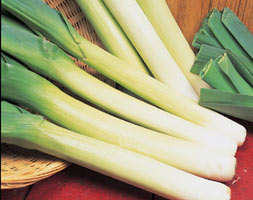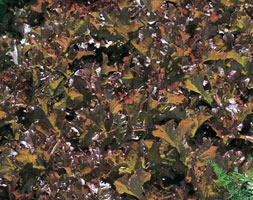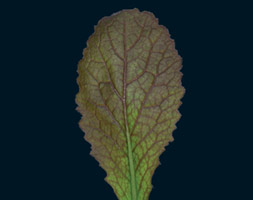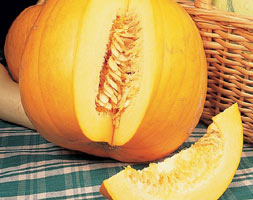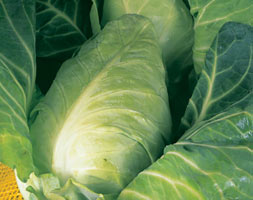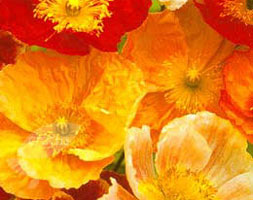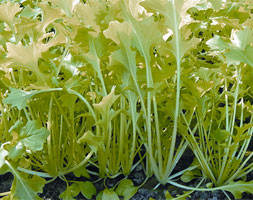Price reductions at Crocus
by Sarah - February 17th, 2018.Filed under: Crocus, Price Reductions.
Crocus has cut the price of hundreds of items
leek ‘Lyon’ (leek / Allium porrum ‘Lyon’) was £1.49 now £0.99
Position: full sun Soil: fertile, neutral to slightly acidic sandy loam As the name suggests, this is a superb variety that has been excelling on the show benches since Victorian times. Long, thick white stems are topped with mid-green leaves, producing tall, elegant and fine-flavoured plants which reach maturity early for an autumn crop. They are also very hardy, staying in good condition in the garden right into winter. Growing Instructions: Sow direct into shallow drills in a well-prepared seedbed in spring, and thin seedlings to 1cm apart. When seedlings are about pencil thickness, transplant to their final growing place, leaving 15cm between plants. For the longest white stems, dib a hole for each plant 15cm deep and drop the seedling in before filling the hole with water. If you’re growing for show, start your leeks in seed trays in a greenhouse in January to give them the longest possible season. Sow: March-April Harvest: September-October Approximate quantity: 300 seeds.
lettuce ‘Red Salad Bowl’ (lettuce (loose-leaf) / Lactuca sativa ‘Red Salad Bowl’) was £1.49 now £0.99
Position: full sun Soil: fertile and moisture retentive The gorgeous red-tinged bronze leaves of this lovely loose-leaf lettuce are deeply lobed, like an oak leaf, and look very pretty in salads. This reliable variety will tolerate some hot weather and is very slow to bolt. It’s also a cut-and-come-again type, so you can pick the outer leaves over several weeks and the heart continues producing more. Alternate plants with ‘Green Salad Bowl’ lettuces for a pretty and colourful edging in flowerbeds and decorative veg gardens. Growing Instructions: Sow into trays or modules in the greenhouse or on a windowsill and harden off before planting out. Or sow direct in shallow drills where they are to grow, either in containers or in the open ground, thinning seedlings to 15cm apart. Protect from slugs and cover early sowings with a cloche. Sow: March-July Harvest: May-September Approximate quantity: 1200 seeds.
mustard ‘Red Giant’ (mustard / Brassica juncea ‘Red Giant’) was £1.29 now £0.99
Position: full sun Soil: humus-rich, moisture retentive soil Peppery and packed with flavour, this easy-to-grow oriental salad leaf will lift your cooking to a whole new level. Use sparingly to add pizazz to lettuce leaf mixes, scatter on pizzas for some extra bite, or use in a spicy stir-fries. It’s a good-looking plant, too, with large, red-tinged leaves intensifying to deep burgundy purple in cold weather. The flavour gets hotter and more mustardy as plants mature, so for a milder taste pick leaves young. Growing Instructions Sow sparingly in shallow drills in a sheltered spot in sun or light shade. Once seedlings appear, thin to 20cm apart if growing to full size: if harvesting as baby leaves plants can grow as close as 3cm. Keep well watered and if you protect late sowings with cloches they’ll keep growing throughout the winter. Sow: April to September Harvest: June to October Approximate quantity: 350 seeds
pumpkin ‘Jack O’Lantern’ (pumpkin / Cucurbita pepo ‘Jack O’Lantern’) was £1.29 now £0.99
Position: full sun Soil: fertile, humus-rich, well-drained but moisture retentive The perfect pumpkin for a Hallowe’en crop, producing bright orange fruits every bit large enough for carving but also sweetly-flavoured and excellent in pies, stews and soups. The plants are vigorous and hefty, but more compact than many pumpkins, scrambling over the ground without taking over the plot, making this an excellent choice where space is more limited. Growing Instructions: Sow two seeds to a 10cm pot in late spring in a greenhouse or on a sunny windowsill. Pot on seedlings as they grow, then harden off carefully and plant out in a sunny, sheltered spot once all threat of frost has passed. Leave 90cm between each plant and protect from slugs. To keep pumpkin plants in bounds, lift up wayward shoots before they make it out of the veg bed and guide them around the plant in circles. Sow: April-June Harvest: September-October Approximate quantity: 15 seeds.
brussels sprout ‘Evesham Special’ (brussels sprout / Brassica oleracea (Gemmifera Group) ‘Evesham Special’) was £1.29 now £0.99
Position: full sun Soil: rich, firm soil with added lime if necessary A real old favourite for its generous crops which are ready particularly early in the season, giving you harvests from September till Christmas. The plants are medium height, making them a good choice for exposed sites and smaller gardens, and grow vigorously to produce densely-packed stems of fat, firm and delicious sprouts. Growing Instructions: Sow seeds sparingly under cover into pots or seed trays of well-drained seed compost in spring. Pot on seedlings individually as they grow and gradually accustom to cooler temperatures before planting outside in May, spacing plants 60cm apart and firming in well. Keep well-watered, protect from slugs and net against pigeons. Growing plants under horticultural mesh or fleece prevents butterflies laying their eggs and so avoids caterpillar damage. Sow: March-April Harvest: September-December Approximate quantity: 500 seeds.
cabbage ‘Durham’ (cabbage / Brassica oleracea (Capitata Group) ‘Durham Early’) was £1.49 now £1.19
Position: full sun Soil: fertile, well drained, moisture-retentive and firm A classic spring cabbage variety for picking loose-leafed as greens, or leaving to heart up and produce a large, handsome pointed head with an outstanding flavour and crisp texture. As the name suggests you can start picking this versatile spring vegetable particularly early in the season, providing a welcome harvest when there’s little else around. Growing Instructions: Sow seeds in late summer into well-prepared seed beds in shallow drills 1.5cm deep. Keep well watered and thin seedlings to 5cm apart as they appear. Once plants are 10cm tall, transplant to their growing site, planting them 35-40cm apart and about 1.5cm deeper than they were in the seedbed and firming well. Protect from slugs and net against pigeons. Growing spring cabbage under horticultural fleece or mesh will prevent caterpillar damage. Sow: July-August Harvest: April-May Approximate quantity: 450 seeds.
leek ‘Giant Winter’ (leek / Allium porrum ‘Giant Winter 3’) was £1.99 now £1.29
Position: full sun Soil: fertile, neutral to slightly acidic sandy loam An extremely hardy leek which will put up with blistering gales and frost without a pause. The solid, long white stems are exhibition quality with an outstanding flavour: dig them up young and tender early in the season, or leave them to bulk up as they’ll stand well in the ground for you to harvest as you need them. Growing Instructions: Sow direct into shallow drills in a well-prepared seedbed in spring, and thin seedlings to 1cm apart. When seedlings are about pencil thickness, transplant to their final growing place, leaving 15cm between plants. For the longest white stems, dib a hole for each plant 15cm deep and drop the seedling in before filling the hole with water. Leeks can be dug up and ‘heeled in’, covered in loose soil in a trench in a sheltered spot for easy access in winter. Sow: March-April Harvest: October-January Approximate quantity: 350 seeds.
Papaver nudicaule (Papaver nudicaule) was £1.79 now £1.29
Position: full sun Soil: moist, well-drained Rate of growth: average Flowering period: June to August Hardiness: hardy biennial (or annual) Icelandic poppies are perfect for a sunny border or cottage garden where they will produce an abundance of colourful blooms throughout the summer. The flowers come in shades of orange, red, cream, yellow and pink, and are held on sturdy stems above the foliage. They look dazzling in a vase and should be gathered in bud the evening before they’re needed. Garden care: Sow shallowly, directly into a well prepared bed in spring and water well. As the seedlings develop, thin them out to 30cm intervals keeping just the healthiest and most robust plants. Protect the emerging seedlings from slugs and snails. Deadheading will help prolong the flowering period. Sow: March-May Flowering: June-August Approximate quantity: 1200 seeds
namenia (turnip tops / Brassica rapa (Rapifera Group) ‘Namenia’) was £1.79 now £1.29
Position: full sun Soil: fertile and moisture retentive Producing crunchy leaves with a tangy spinach-like flavour, namenia is ideal for adding to mixed salads where its deeply divided leaves will add flavour as well as textural interest to the bowl. Best picked when young, it is an easy and fast crop to grow and will be ready to harvest in just a few weeks after sowing. Growing Instructions: Sow into trays or modules in the greenhouse or on a windowsill and harden off before planting out. Or sow direct in shallow drills where they are to grow, either in containers or in the open ground, thinning seedlings to 15cm apart. Protect from slugs and cover early sowings with a cloche. Ready to pick when the plant is approximately 15cm tall – the leaves and their soft stalks both have a good flavour. Sow: April – October Harvest: May – November Approximate quantity: 500 seeds.







